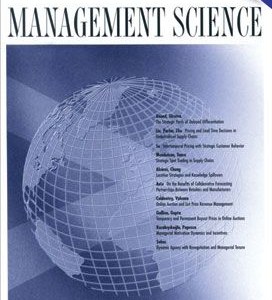
Abdellaoui, M., Bleichrodt, H., l'Haridon, O. and Paraschiv, C. (2013). Is There One Unifying Concept of Utility? An Experimental Comparison of Utility Under Risk and Utility Over Time Management Science, 59(9):2153--2169.
-
Affiliated author
-
Publication year2013
-
JournalManagement Science
The nature of utility is controversial. Whereas decision theory commonly assumes that utility is context specific, applied and empirical decision analysis typically assumes one unifying concept of utility applicable to all decision problems. This controversy has hardly been addressed empirically because of the absence of methods to measure utility outside the context of risk. We introduce a method to measure utility over time and compare utility under risk and utility over time. We distinguish between gains and losses and also measure loss aversion. In two experiments we found that utility under risk and utility over time differed and were uncorrelated. Utility under risk was more curved than utility over time. Subjects were loss averse both for risk and for time, but loss aversion was more pronounced for risk. Loss aversion over risk and time were uncorrelated. This suggests that loss aversion, although important in both decision contexts, is volatile and subject to framing.